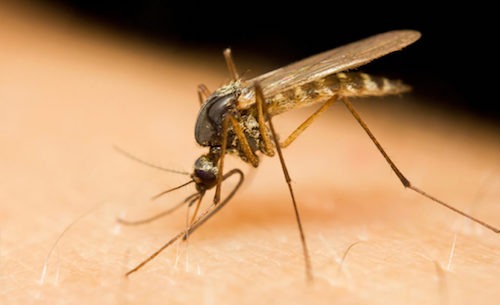Thanks for your support! If you make a purchase using our links in this article, we may make a commission. And, as an Amazon Associate, I earn from qualifying purchases. See the full disclosure here.
How many times have you been outdoors enjoying camping, barbecueing out or sitting by a campfire fire constantly being interrupted by bugs flying into your face or biting your legs? Or worse yet you apply insect repellent, and the bugs still bite you anyway leaving red swollen bites marks on your skin.
It’s frustrating to me because I know I can just grab a can of insect repellent with DEET and get some instant relief! But I’m afraid to use it. And I definitely don’t want to use it on or near kids. So, I resign myself to using insect repellents without any DEET. And they just don’t work as well.
So, we decided to check out some homemade insect repellents to see if any of them actually work. Here are the best 5 that we could find. One that we found will work for your pets and another will cover your yard or campsite too!
This article will provide some Homemade Insect Repellent recipes so you can enjoy the great outdoors without the nuisance of biting insects.
Do Homemade Insect Repellents Actually Work?
Mosquitos are a serious threat to your health as they can carry multiple diseases, including the zika virus and Lyme disease. Recently homemade insect repellents have started to become more popular than the heavy chemical insect repellents which have been popular for years. Examples of chemical insect repellents are brands like “Off!” and “Deep Woods.”
Homemade repellents use natural ingredients which aim to eliminate some of the harmful ingredients used in commercial insect repellents. There are a few popular ingredients that are often included in homemade insect repellents because of their proven effectiveness with little health risks.
One very effective ingredient used in homemade insect repellents is Oil of Lemon Eucalyptus (OLE). The extracted chemical from OLE is called PMD, which has been proven as a successful insect repellent.
Testing has proven that repellents containing OLE have effectively warded off mosquitos for anywhere from 3-6 hours per application. OLE is proven to be safe as well because it is classified as a biopesticide. This means it is subject to significantly more tests than botanicals which are commonly found in synthetic commercial bug repellents.
Why Use Homemade Bug Spray?
One of the most common reasons for people making the switch to homemade insect repellents is they have sensitive skin, and commercial bug spray causes them to develop a rash or a reaction of sorts. On the contrary, homemade insect repellents contain chemicals that are safe for the skin and do not harm people with sensitive skin.
Another reason to use homemade bug spray is the chemicals in the repellent actually benefit the human body. For example, Peppermint is thought to boost energy and help with digestion and lavender is used for stress relief. Homemade bug spray recipes are also believed to smell better than regular bug spray which may not matter to most but to some the smell of bug spray can cause irritation.
What is DEET and Why Avoid It?
An estimated 30% of Americans use DEET bug spray to prevent mosquitos each year. But what most people don’t know is that there is very little scientific evidence that can prove that DEET is likely to harm someone. Before we tell you if DEET is bad for you, you should understand the history behind the chemical.
DEET was created by the US Army in the 1940s as an insect repellent and 10 years later it was approved for use by the general public. DEET is effective in repelling insects because it disguises the scent of humans, which is what attracts mosquitos in the first place. The scientists who study DEET say it works better than any other product in the marketplace.
In 1998 the Environmental Protection Agency thoroughly investigated and studied the effects of DEET on humans. The study found that 46 seizures and four deaths were possibly linked to exposure to DEET. It estimated that since 1960, the incidence of seizures with a potential link to DEET exposure was one per 100 million uses.
It also discovered that almost all of the incidents of overexposure were due to incorrect use of the product, which caused it to be ingested. What this means is that people were breathing in the aerosol while applying it. DEET can sometimes cause irritation to the skin or in some cases, the eyes, which is why some people refuse to use it.
Common skin reactions include blisters, skin irritation, burning sensation, and numbness. If DEET is ingested, it can cause vomiting along with diarrhea. These are just the short term effects of DEET. If exposed to the chemical for a prolonged period of time, the chemical is known to cause tremors and occasional vomiting.
Although the science says the product is safe for people to use, you should investigate and decide for yourself if DEET is right for you or your children.
Can DEET Harm the Environment?
When you spray DEET onto yourself, there is plenty more that goes into the air, especially if you’re using an aerosol. But the CDC concluded that DEET is broken down by sunlight, as well as other chemicals in the air. In roughly 5 hours, one-half of the DEET sprayed into the atmosphere disappears.
After you apply it, we wash off the DEET by taking a shower or washing our clothes, and it makes its way into local groundwater, streams, and waterways. While DEET can be found in lakes and streams, it dissipates pretty quickly.
All that being said, we try to avoid using products that contain DEET, especially when applying bug spray to children. And that prompted us to try some good old fashioned homemade bug bite repellents. Here are the best 5 we could find for humans, pets, and yards.
The 5 Best Homemade Insect Repellents
These homemade insect repellents are a safe alternative to using commercial brand name bug sprays that can be irritating to your skin and possibly harmful to the environment. And, we offer some simple recipes that show you how to make homemade insect repellent that really works on you, your yard and your pets too!
1. Insect Repellent Recipe Using Essential Oils
Ingredients:
- 30 drops geranium essential oil
- 30 drops citronella essential oil
- 20 drops lemon eucalyptus essential oil
- 20 drops lavender essential oil
- 10 drops rosemary essential oil
- 1 tbsp vodka or rubbing alcohol
- ½ cup natural witch hazel
- ½ cup water (or vinegar)
- 1 tsp vegetable glycerin (optional)
Instructions:
1. Add essential oils to a glass spray bottle and add 1 tbsp of either vodka or rubbing alcohol. Shake well in order to mix the oils with the alcohol.
2. Add the ½ cup of witch hazel and shake well to mix the two.
3. Add ½ tsp vegetable glycerin if you are using it, this helps the mixing process
4. Add water and shake again.
5. Apply to skin
Shake well before each use to ensure the oils and water are mixed
2. Insect Repellent Recipe Using Vinegar
Ingredients:
- Witch hazel
- Apple Cider Vinegar
- Citronella essential oil
Instructions:
1. Pour 1/3 cup of witch hazel into a spray bottle. Use a funnel to make sure you don’t spill any.
2. Add 1/3 cup of apple cider vinegar to the witch hazel in the spray bottle
3. Pour 5-6 drops of citronella essential oil into the bottle and tightly secure the lid. Shake well to ensure everything is mixed together
4. Spray onto exposed skin before going outdoors. To apply to areas on or around your face, spray the solution onto your hand and rub it on your neck and face.
Tips and Suggestions:
To avoid the attraction of mosquitos avoid wearing floral fragrances
Do not apply insect repellent to fresh cuts as it may burn
3. Insect Repellent Recipe Using Beeswax Balms
Ingredients:
- 8 ounces olive, coconut, sweet almond, jojoba, or sesame oil (any blend of these oils)
- 1-2 ounces of meltable organic beeswax
- 0.4 ounces citronella essential oil
- 0.2 ounces eucalyptus essential oil
- 0.2 ounces lemongrass essential oil
- 0.2 ounces cedarwood essential oil
Instructions:
1. Measure 8 ounces of oils (not the citronella, eucalyptus, lemongrass, and cedarwood) and beeswax using a kitchen scale, start with a lower amount of beeswax like 1 ounce and add more if you need. The amount of beeswax will affect the consistency of the final product.
2. In a boiler or small pot, melt one of the oils and beeswax on a low heat setting
3. Once melted allow to cool before adding the essential oils
4. Pour mixture into roll-up tubes or lip balm tubes and allow to cool overnight
5. Label the tube with the ingredients and the date created. It will be good for 2-5 years.
How To Use:
Roll over skin to protect from mosquito bites, apply heavily and frequently for best results.
4. Yard Spray Insect Repellent Recipe Using Epsom Salt
Ingredients:
- 16 oz. bottle of peppermint flavored natural mouthwash (Do not use Spearmint)
- 3 cups of lavender scented Epsom salt
- 3 stale 12 oz beers
Instructions:
Pour all the ingredients into a large bowl and mix until Epsom salt dissolves completely. Use a funnel to pour into a spray bottle. You can spray this around your yard or campsite and you will receive 6-8 hours of protection.
Suggestions:
When selecting the ingredients, choose an organic mouthwash, and Epsom salt that is either lavender or eucalyptus scented.
5. Tick Repellent (one for pets one for people)
Tick Repellent for Dogs
Ingredients:
- One quart of water
- 10 drops of lemongrass essential oil
- 10 drops of citronella essential oil
- 1 cup of vinegar (white distilled or apple cider)
- 3-4 drops of cedarwood essential oil
Instructions:
1. Pour a quart of boiling water over the top of thinly sliced lemons and allow to steep overnight
2. Wait 12 hours and pour the lemon water into a large spray bottle
3. Add the essential oils and vinegar
How To Use:
Refrigerate and shake well before applying to dog
When applying to your dog, make sure to spray it onto your hands before rubbing it in gently on their face.
Tick Repellent for Humans
Ingredients:
- 30 drops geranium essential oil
- 30 drops Virginia cedarwood essential oil
- 10 drops garlic essential oil
- 1-ounce grain alcohol
- 3 ounces distilled water
Instructions:
1. Fill a spray bottle with 1 ounce of grain alcohol and 3 ounces of water
2. Add 30 drops of geranium oil, 30 drops Virginia cedarwood oil, and 10 drops of garlic oil
3. Screw cap on and mix well
4. Shake before each use
How To Use:
Spray on clothes and shoes
RELATED READING: Check out our article called 7 Incredibly Effective Home Remedies To Rid Your RV of Ants to keep ants and other bugs out of your RV!
Conclusion
Mosquitos and ticks are not to be taken lightly, and it is essential to make sure you’re using the proper insect repellent to keep you and your family safe from diseases carried by insects. Hopefully, you will find these homemade insect repellent recipes to be an excellent substitute to products that contain DEET.


